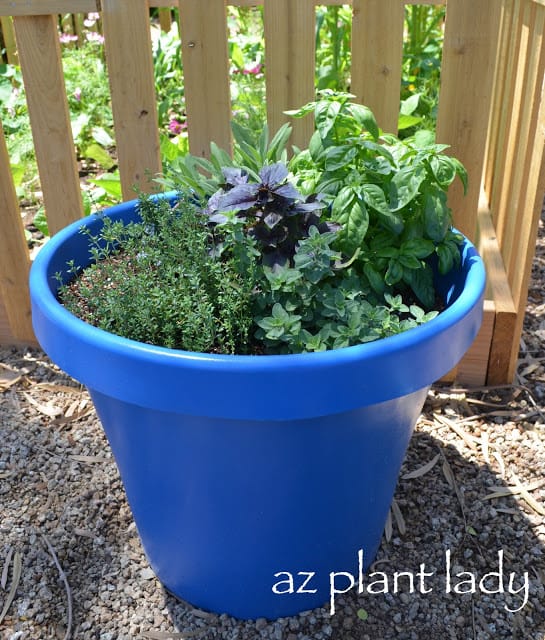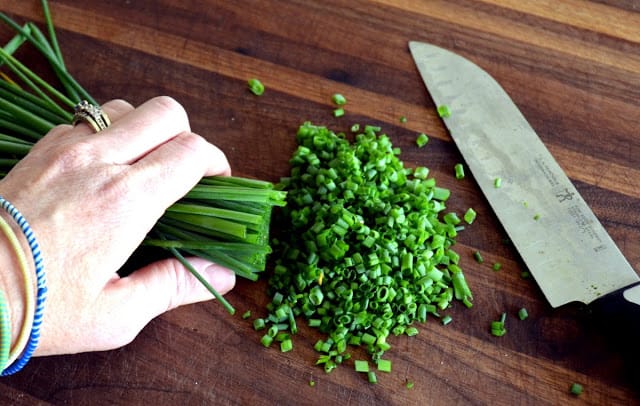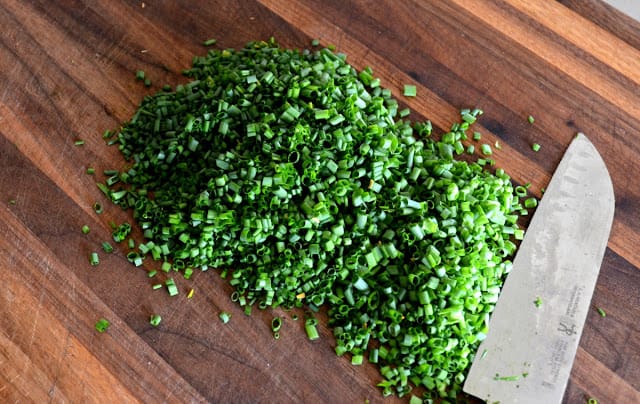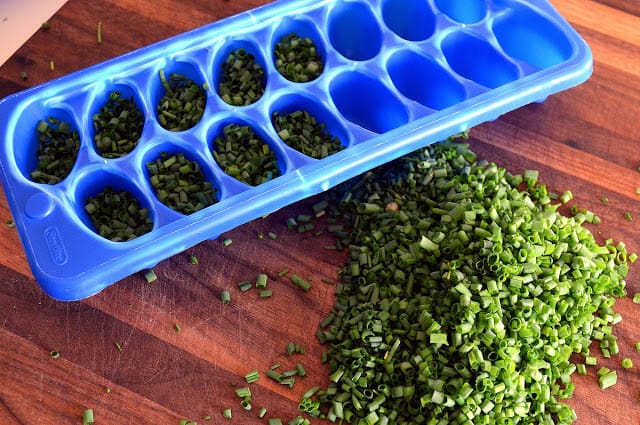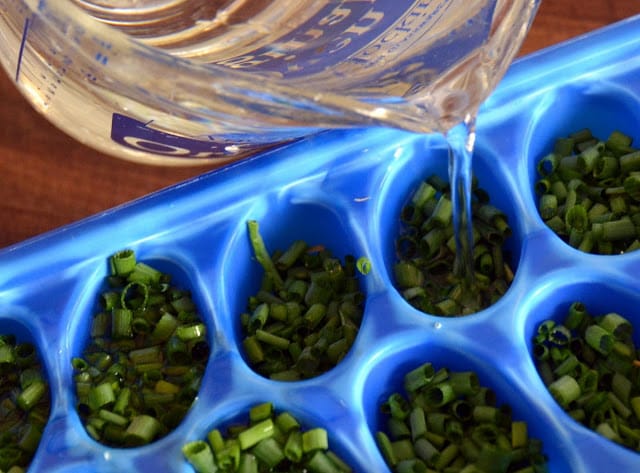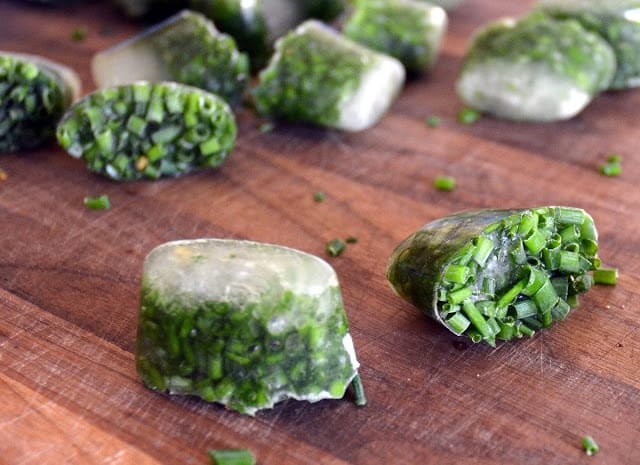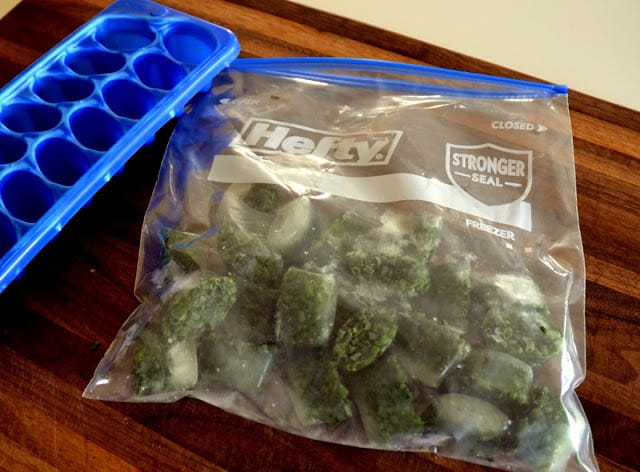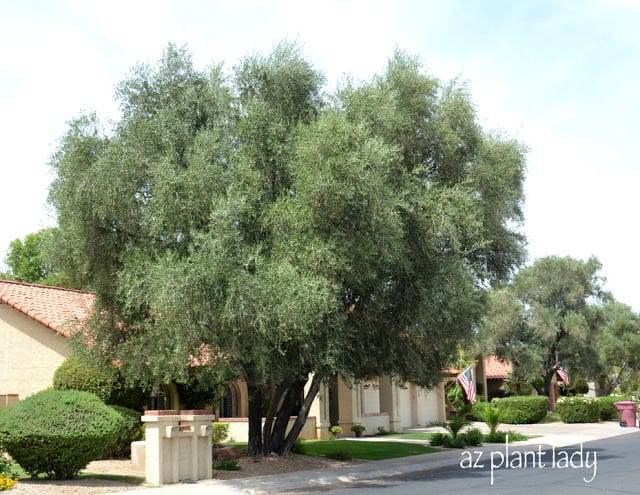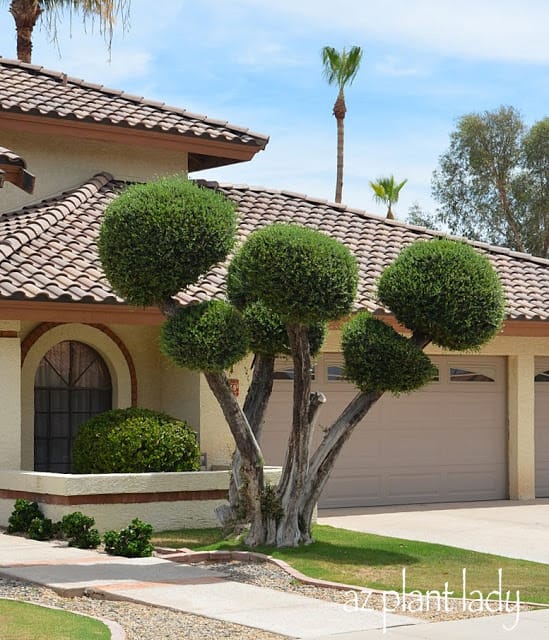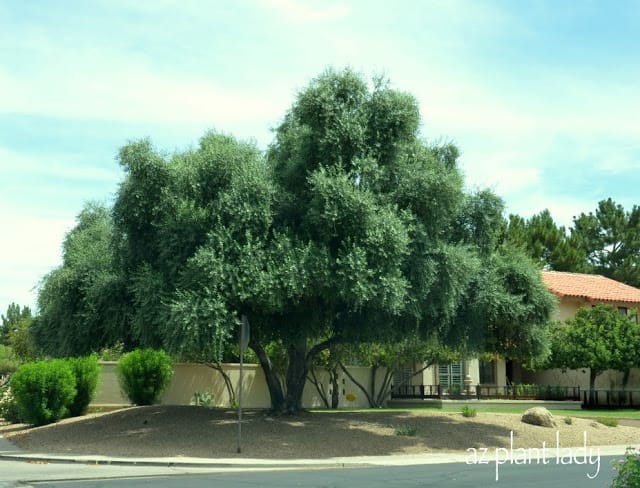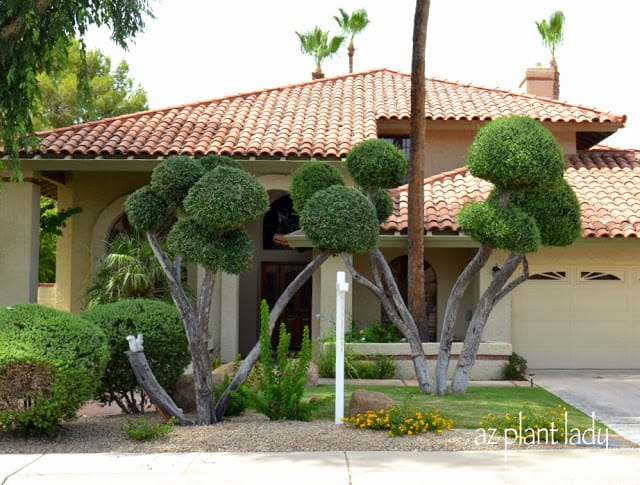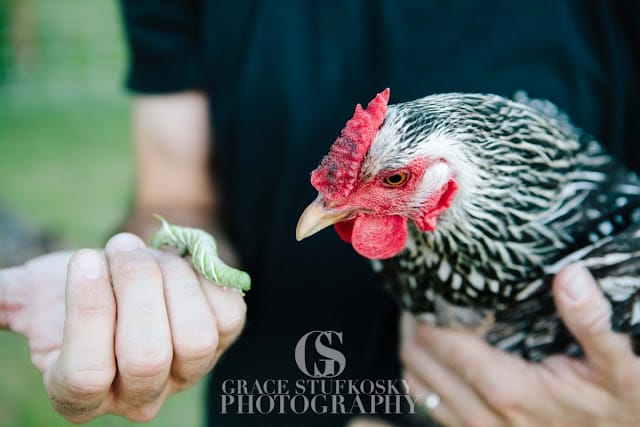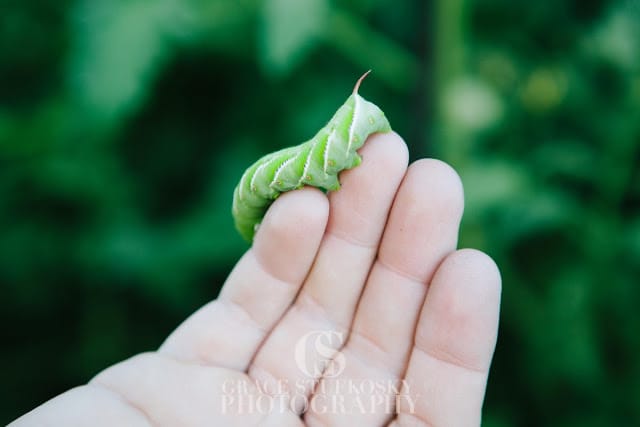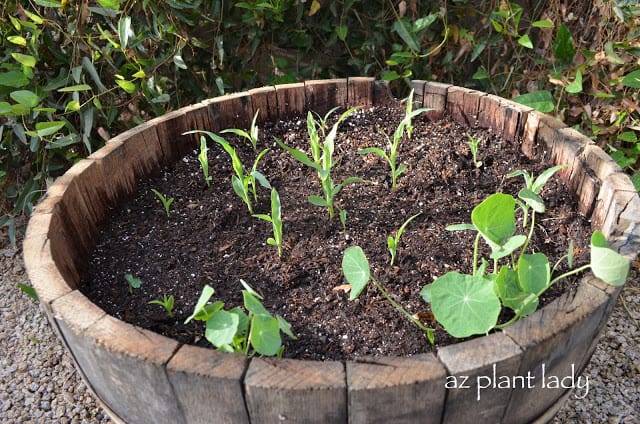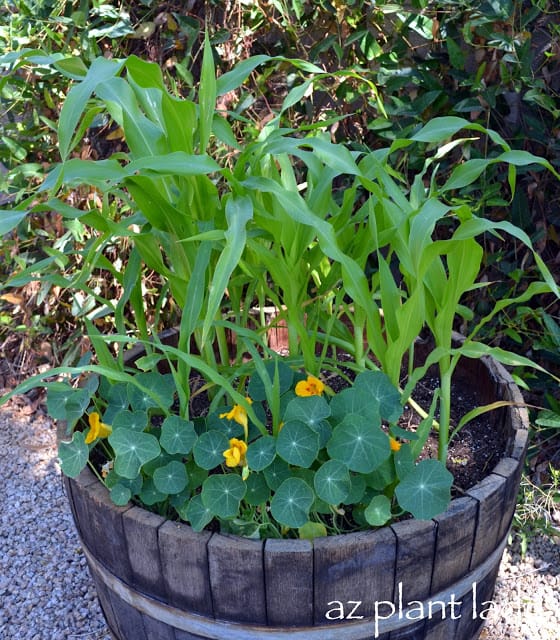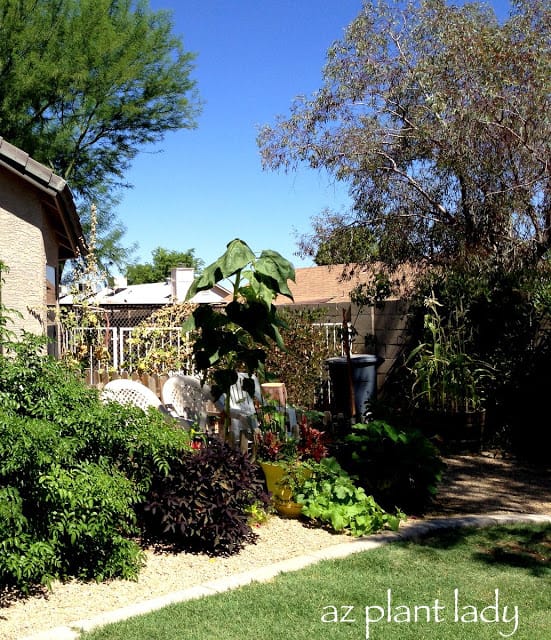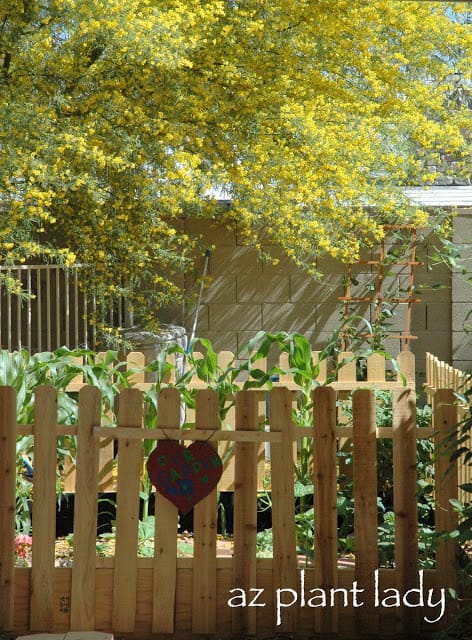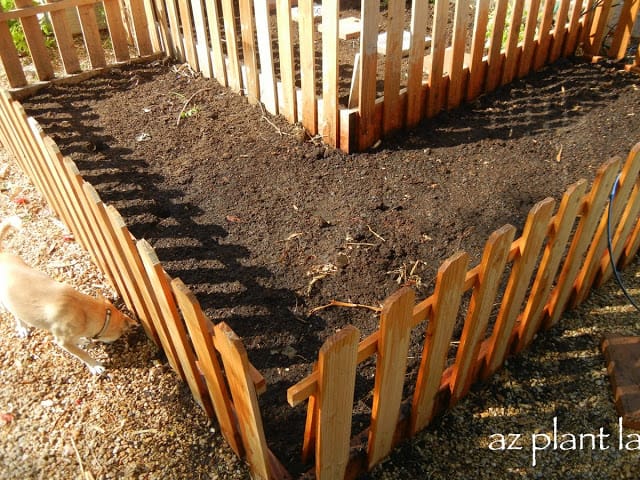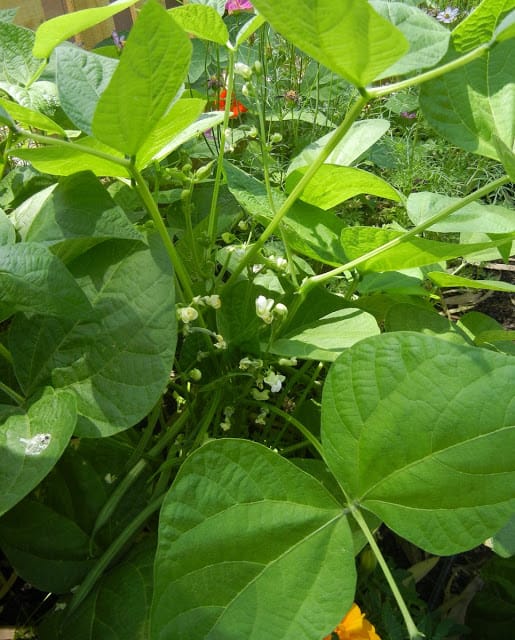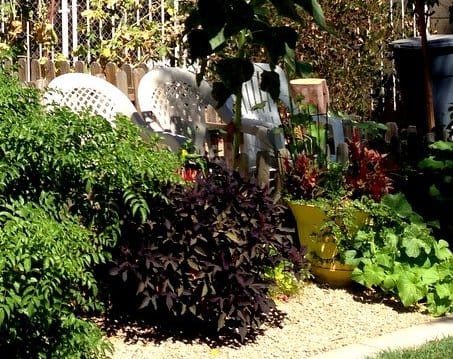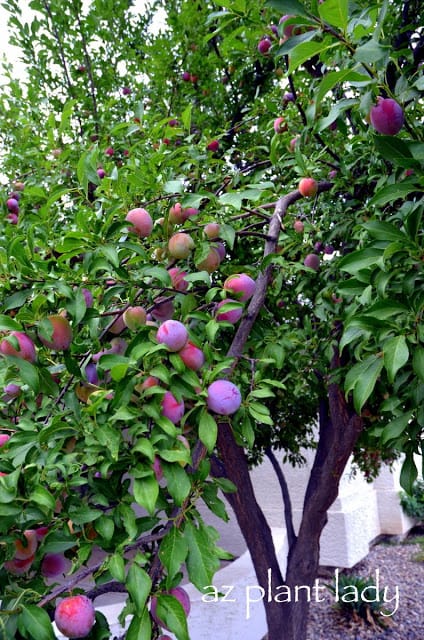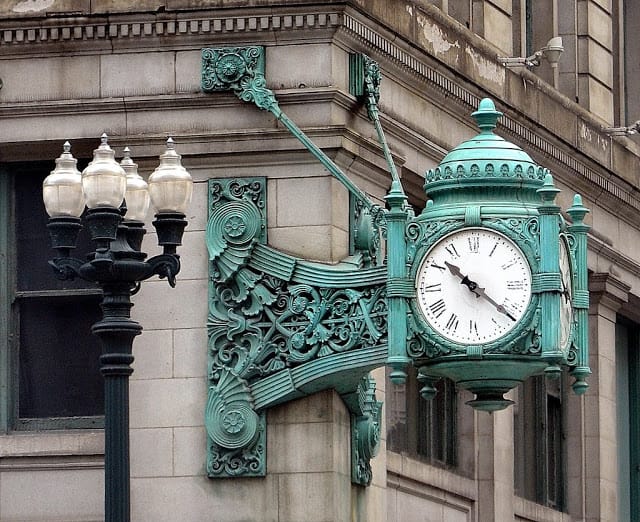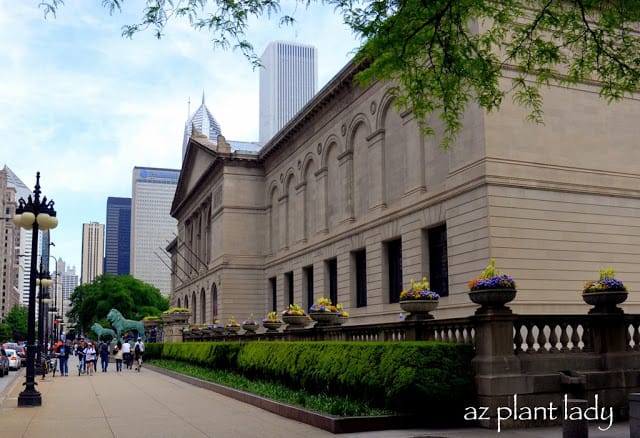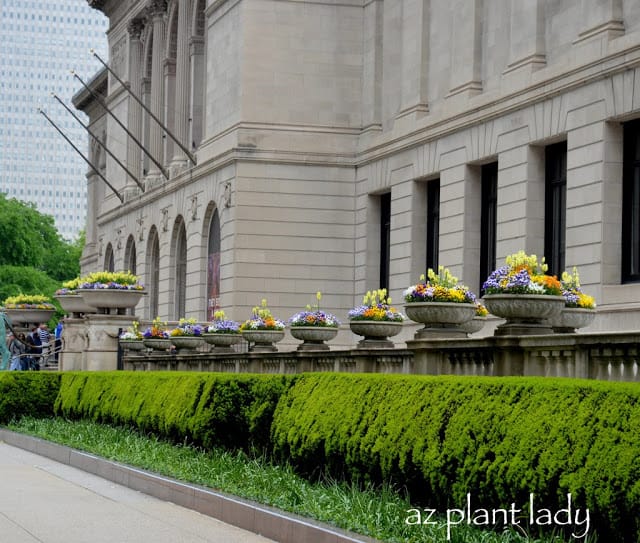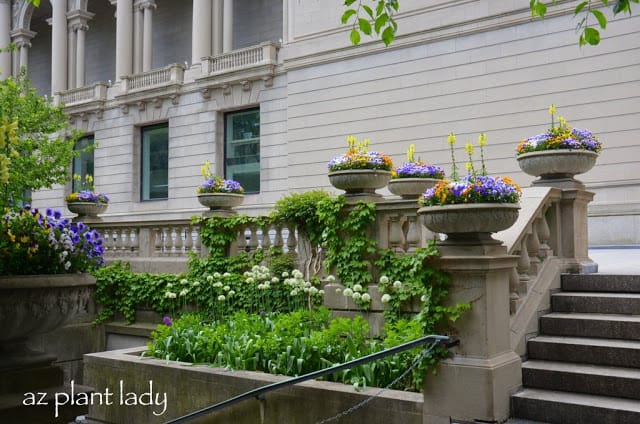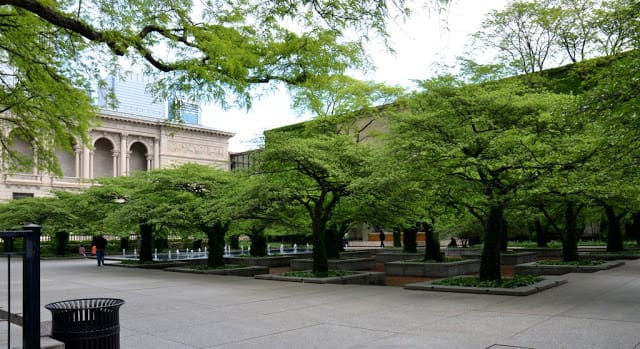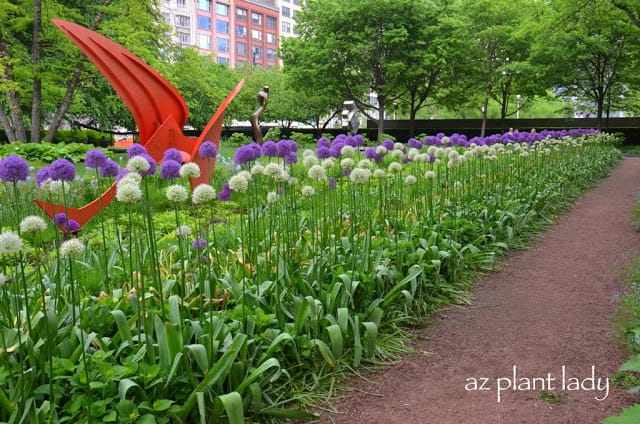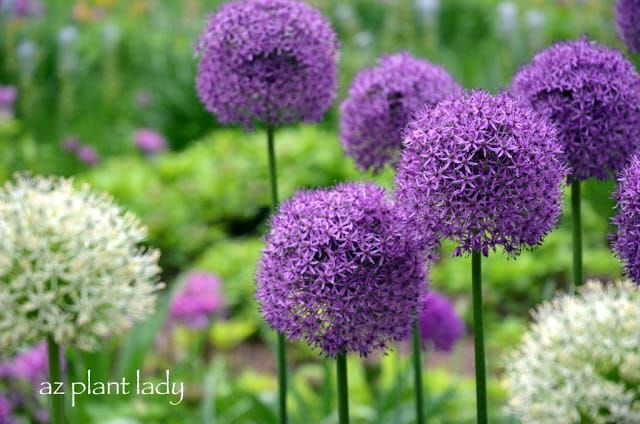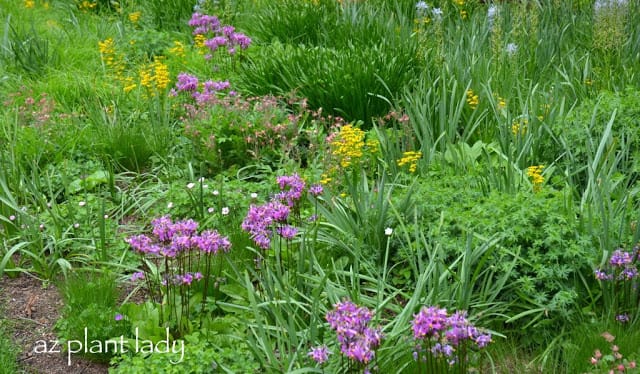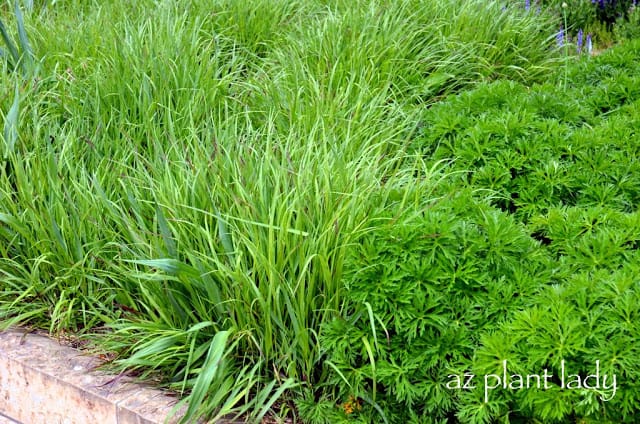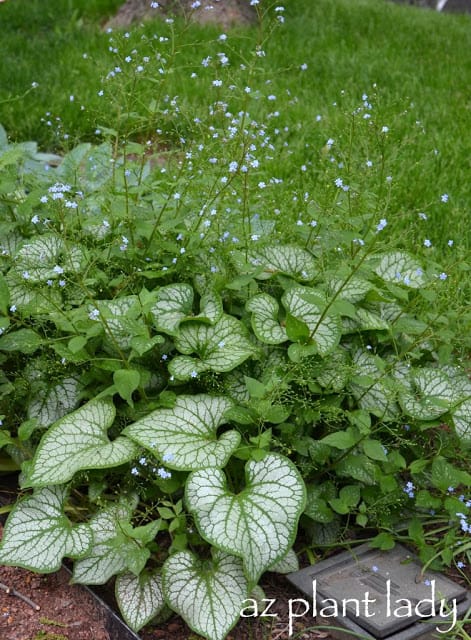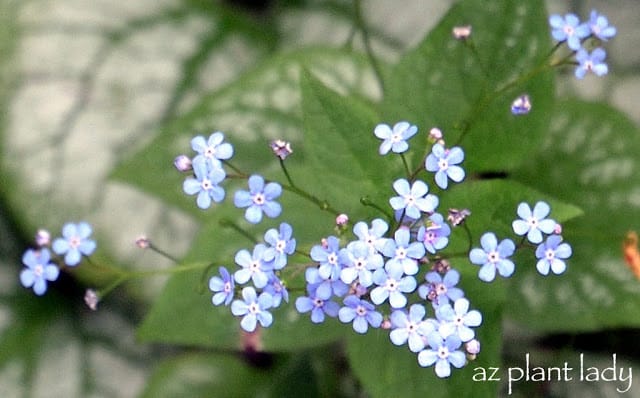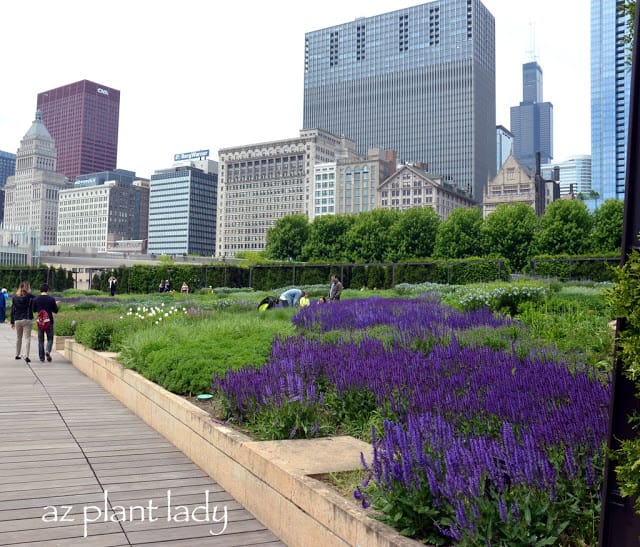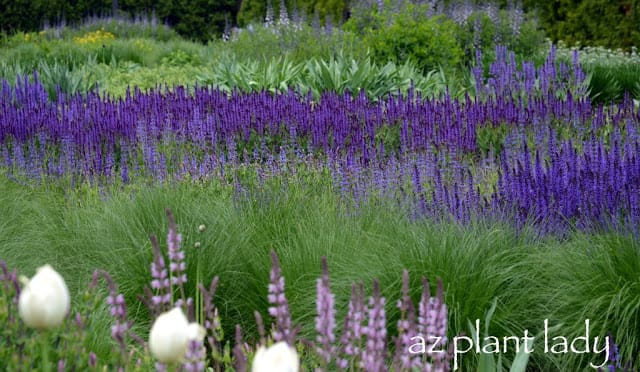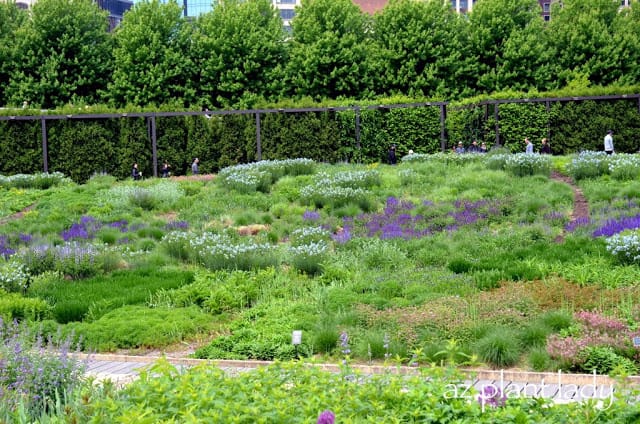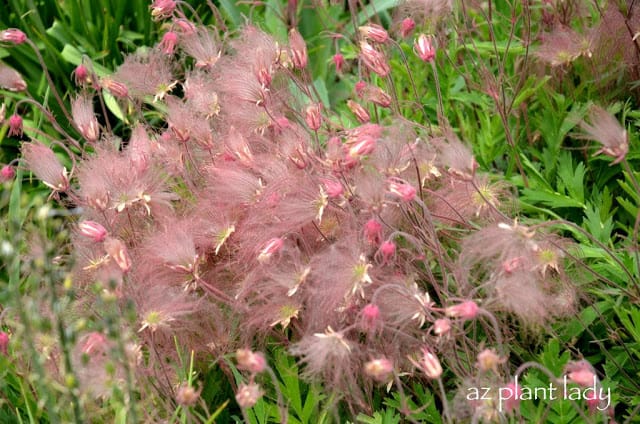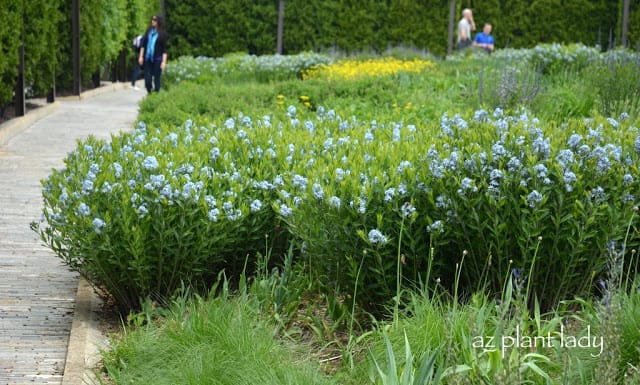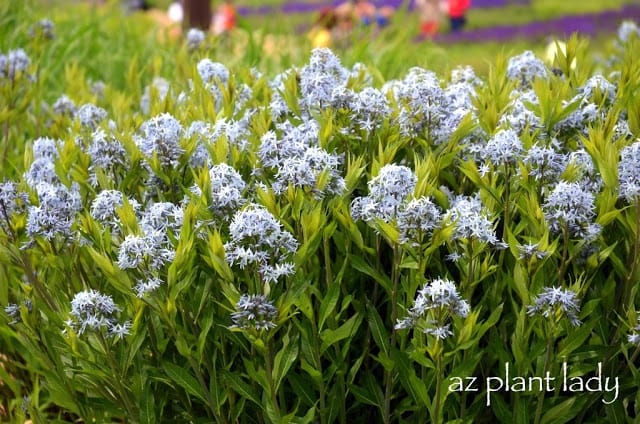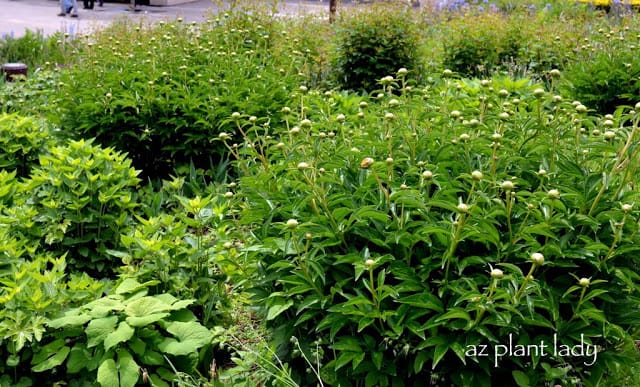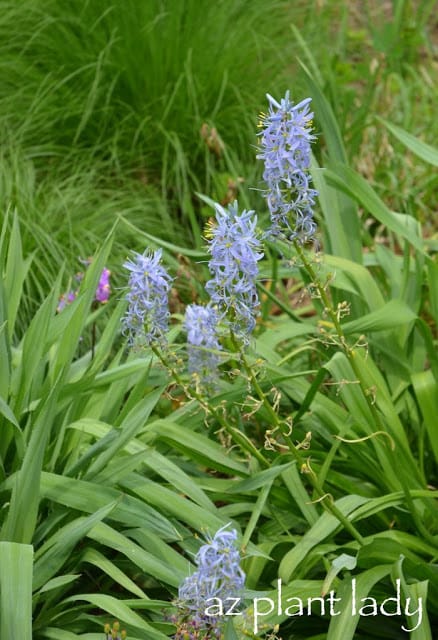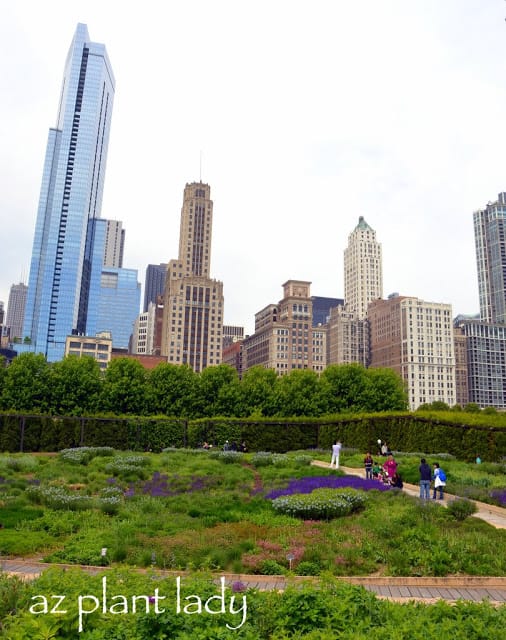It may be awfully hot outside, but my garden is awash in brightly colored flowers from my single bougainvillea, Arizona yellow bells and ‘Rio Bravo’ sage, which shrug off the summer heat.
Last year, we decided to create an edible garden along the side of our house.
This was a large underused area that we look out at from our kitchen, family room and bedrooms.
To get it ready for planting, we had our ghost gum eucalyptus tree removed. It was a beautiful tree, but was quickly outgrowing this area with its overhanging limbs.
The next step involved pulling out some of the flowering shrubs along the back wall and along the side of the house. We kept the flowering shrubs along the side wall, because they add beauty and help to break up the bare expanse of the wall.
This is what the side garden looks like today…
The centerpiece of the edible garden is the vegetable garden. Right now, it is filled with corn, zucchini, tomatoes, cucumbers and sunflowers.
In front, is my colorful container filled with a variety of herbs including basil, parsley, sage and thyme. I bought an inexpensive plastic container and spray painted it a bright blue. The container is connected to the drip system of the vegetable garden.
In the foreground (not pictured) is our new Arizona sweet orange tree. We planted it last year and are excited to have three oranges growing on it.
You may be thinking that three oranges is not much to be excited about, but the first couple of years after a citrus tree is planted – you are lucky to get any fruit at all.
Newly planted citrus trees shouldn’t be fertilized during the first year, because you want them to focus on root growth, not upper growth when there is not a substantial root system for them to rely on. Since it has been a year since we have planted it, we will fertilize this year.
In front of the vegetable garden are a pair of new peach trees.
I love peaches and have enjoyed the fruit from my mother’s peach trees for years. I finally decided that I wanted to grow my own.
We got 18 peaches this year, which is a lot considering that we planted them in January.
Notice the green plant at the base of the peach tree? It is a gourd plant that will quickly grow and cover the ground. This will serve as a ‘living mulch’ and help to prevent weeds and shade the roots of my peach trees.
Inside the vegetable garden, sunflower seeds are beginning to form. It is so fun to see the birds hanging upside down trying to get to the seeds.
You can allow the birds to eat the seeds or if you want to save them for yourself, simply tie a paper bag around the flower to keep the birds away.
I’ll probably save some flowers for ourselves and let the birds enjoy the seeds of a couple of unprotected sunflowers.
A large zucchini plant is growing in the background and as anyone who has grown zucchini will tell you, it is prolific.
The slightly wilting plant in the foreground is a pumpkin plant. If you want a pumpkin for fall, then June is when you want to plant them.
It is normal for the leaves to wilt slightly during the heat of the day. They will return to normal later in the day.
Zucchini can hide underneath the large leaves of the zucchini plant. I’m going to use this one to make my chocolate chip zucchini bread. It’s delicious and your kids will never know there is zucchini in it 😉
I found the recipe on Pinterest and have already made it once. My family keeps bugging me to make more. Here is the link to the recipe, if you are interested – Chocolate Zucchini Bread
My tomatoes are flourishing in the natural shade provided by my sunflowers.
One of my cherry tomato plants has even decided to expand a bit outside of the garden.
Behind the vegetable garden are my two apple trees, planted this January. One is a Anna apple tree and the other is a Dorsett Golden. These apple trees do well in the desert and although they will produce apples if planted alone – they will produce more apples because they will cross pollinate each other.
It will take a few years for any apples to appear, but the blossoms in spring are just lovely.
Behind the apple trees are six blackberry bushes. This year, we enjoyed the berries so much and are hoping for even more next year as they grow larger.
Blackberries won’t produce the first year after planting because the berries appear on 1-year odd canes.
Did you know that there are now thornless varieties of blackberries available? I have one….I only wish that the other five were thornless 😉
Well, that is what I have growing in my side edible garden.
Tomorrow, I’ll share what is growing in my original vegetable garden.
What do you have growing in your garden right now?
A Summer Edible Garden: Part 2
